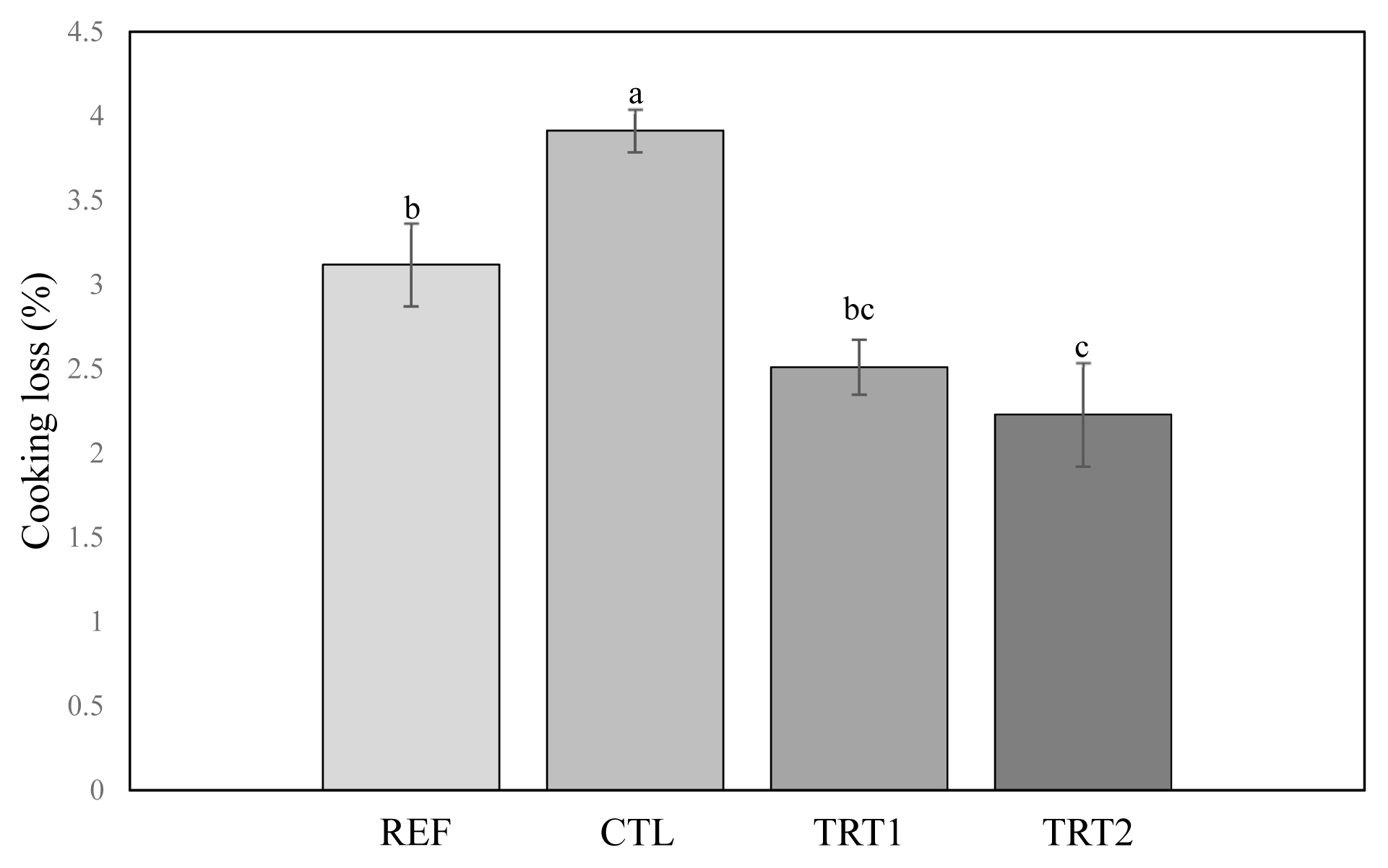8. Puolanne EJ, Terrell RN. Effects of rigor-state, levels of salt and sodium tripolyphosphate on physical, chemical and sensory properties of frankfurter-type sausages. J Food Sci 1983; 48:1036ŌĆō8.
https://doi.org/10.1111/j.1365-2621.1983.tb09155.x

9. Kim HJ, Yang EJ. Optimization of hot water extraction conditions of Wando sea tangle (
Laminaria japonica) for development of natural salt enhancer. J Korean Soc Food Sci Nutr 2015; 44:767ŌĆō74.
https://doi.org/10.3746/jkfn.2015.44.5.767

11. Hwang JK, Hong SI, Kim CT, Choi MJ, Kim YJ. Quality changes of meat patties by the addition of sea mustard paste. J Korean Soc Food Sci Nutr 1998; 27:477ŌĆō81.
12. Kim HW, Choi JH, Choi YS, et al. Effects of sea tangle (
Lamina japonica) powder on quality characteristics of breakfast sausages. Korean J Food Sci Anim Resour 2010; 30:55ŌĆō61.
https://doi.org/10.5851/kosfa.2010.30.1.55

15. Lee H, Choe J, Yong HI, Lee HJ, Kim HJ, Jo C. Combination of sea tangle powder and high-pressure treatment as an alternative to phosphate in emulsion-type sausage. J Food Process Preserv 2018; 42:e13712
https://doi.org/10.1111/jfpp.13712

16. Sinnhuber RO, Yu TC. The 2-thiobarbituric acid reaction, an objective measure of the oxidative deterioration occurring in fats and oils. J Oleo Sci 1977; 26:259ŌĆō67.
https://doi.org/10.5650/jos1956.26.259

17. Conway EJ. Determination of volatile amines. Conway EJ, editorMicrodiffusion analysis and volumetric error. London, UK: Crosby Lockwood and Son, Ltd; 1947. p. 195ŌĆō200.
20. Villamonte G, Simonin H, Duranton F, Ch├®ret R, de Lamballerie M. Functionality of pork meat proteins: Impact of sodium chloride and phosphates under high-pressure processing. Innov Food Sci Emerg Technol 2013; 18:15ŌĆō23.
https://doi.org/10.1016/j.ifset.2012.12.001

22. Hwang JK. Physicochemical properties of dietary fibers. J Korean Soc Food Sci Nutr 1996; 25:715ŌĆō9.
26. Choi YS, Jeong JY, Choi JH, et al. Effects of dietary fiber from rice bran on the quality characteristics of emulsion-type sausages. Korean J Food Sci Anim Resour 2008; 28:14ŌĆō20.
https://doi.org/10.5851/kosfa.2008.28.1.14

27. Jo HG, Kim MJ, Cheong SH. Sea tangle (
Saccharina japonica), an edible brown seaweed, improves serum lipid profiles and antioxidant status in rats fed high-fat and high-cholesterol diets. J Appl Phycol 2019; 31:3957ŌĆō67.
https://doi.org/10.1007/s10811-019-01849-y

29. Cofrades S, Guerra MA, Carballo J, Fern├Īndez-Mart├Łn F, Colmenero FJ. Plasma protein and soy fiber content effect on bologna sausage properties as influenced by fat level. J Food Sci 2000; 65:281ŌĆō7.
https://doi.org/10.1111/j.1365-2621.2000.tb15994.x

32. Arvanitoyannis IS, Stratakos AC. Application of modified atmosphere packaging and active/smart technologies to red meat and poultry: a review. Food Bioproc Technol 2012; 5:1423ŌĆō46.
https://doi.org/10.1007/s11947-012-0803-z

33. Robertson JA, Eastwood MA. An examination of factors which may affect the water holding capacity of dietary fibre. Br J Nutr 1981; 45:83ŌĆō8.
https://doi.org/10.1079/BJN19810079


34. Cofrades S, L├│pez-L├│pez I, Solas MT, Bravo L, Jim├®nez-Colmenero F. Influence of different types and proportions of added edible seaweeds on characteristics of low-salt gel/emulsion meat systems. Meat Sci 2008; 79:767ŌĆō76.
https://doi.org/10.1016/j.meatsci.2007.11.010


35. Kim YS, Kang CO, Kim MH, Cha WS, Shin HJ. Contents of water extract for
Laminaria japonica and its antioxidant activity. Korean Soc Biotechnol Bioeng J 2011; 26:112ŌĆō8.
https://doi.org/10.7841/ksbbj.2011.26.2.112

37. Park PJ, Kim EK, Lee SJ, et al. Protective effects against H2O2-induced damage by enzymatic hydrolysates of an edible brown seaweed, sea tangle (
Laminaria japonica). J Med Food 2009; 12:159ŌĆō66.
https://doi.org/10.1089/jmf.2007.0675


39. Oh CK, Oh MC, Kim SH, Lim SB, Kim SH. Antimutagenic and antimicrobial effect of ethanol extracts from sea-mustard and sea-tangle. Korean J Fish Aquat Sci 1998; 31:90ŌĆō4.









 PDF Links
PDF Links PubReader
PubReader ePub Link
ePub Link Full text via DOI
Full text via DOI Full text via PMC
Full text via PMC Download Citation
Download Citation Print
Print





